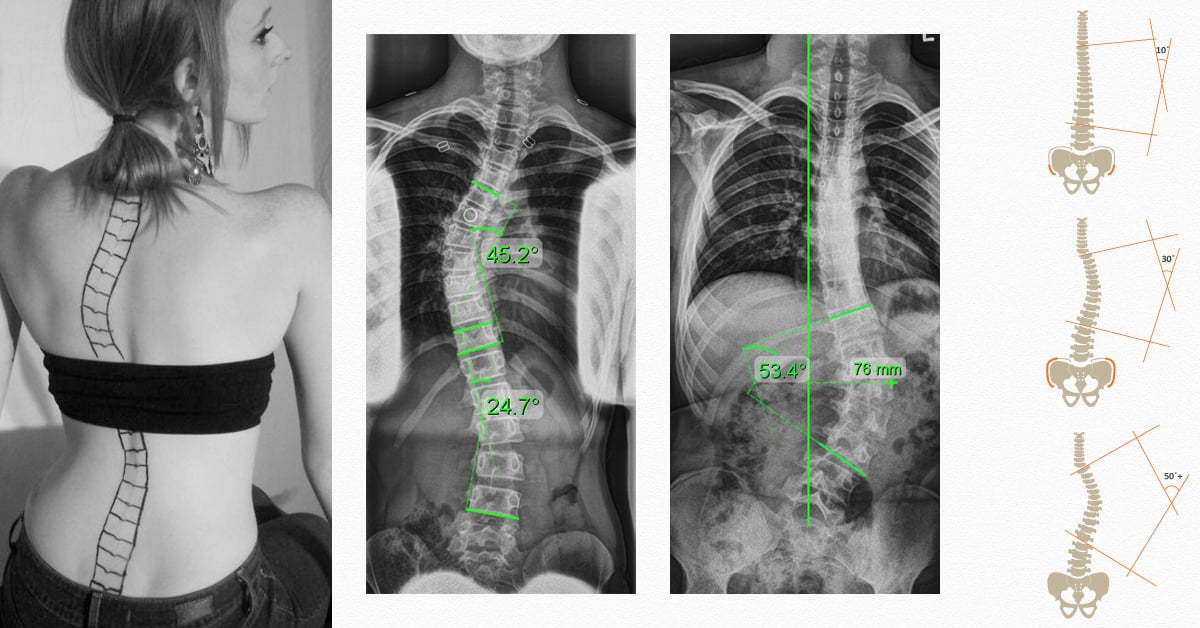How Much Disability Can You Get for Scoliosis?Scoliosis is a medical condition characterized by an abnormal curvature of the spine. It can range from mild to severe and can have a significant impact on an individual’s daily life. For some individuals with scoliosis, the condition may be so severe that it prevents them from working and earning a living. In such cases, disability benefits may be available to provide financial support.

Understanding the Social Security Disability Insurance (SSDI) program
The Social Security Disability Insurance (SSDI) program is a federal program administered by the Social Security Administration (SSA). It provides financial assistance to individuals who are unable to work due to a disability. To qualify for SSDI benefits, individuals must have a qualifying disability and have earned enough work credits through their employment history.

Eligibility criteria for disability benefits due to scoliosis
To be eligible for disability benefits due to scoliosis, individuals must meet the SSA’s definition of disability. According to the SSA, a disability is a medical condition that prevents an individual from engaging in substantial gainful activity (SGA) and is expected to last for at least one year or result in death. In the case of scoliosis, the severity of the condition and its impact on an individual’s ability to work will be evaluated.
Evaluating the severity of scoliosis for disability claims
When evaluating the severity of scoliosis for disability claims, the SSA considers factors such as the degree of curvature, the presence of pain or other symptoms, and the impact on an individual’s ability to perform work-related activities. The SSA uses a medical guide called the Listing of Impairments to assess the severity of scoliosis. If an individual’s condition meets or equals the criteria outlined in the Listing, they may be found disabled.
Medical evidence required for a successful disability claim
To support a disability claim for scoliosis, individuals must provide medical evidence that demonstrates the severity of their condition. This may include medical records, imaging studies such as X-rays or MRIs, and reports from treating physicians. The medical evidence should clearly document the degree of curvature, any associated symptoms or limitations, and the impact on the individual’s ability to work.

How scoliosis is assessed by the Social Security Administration (SSA)
The SSA assesses scoliosis by considering the medical evidence provided, including the degree of curvature, the presence of pain or other symptoms, and the impact on an individual’s ability to perform work-related activities. The SSA may also consider the individual’s age, education, and work experience when evaluating the impact of scoliosis on their ability to work. This is done to determine if the individual can perform their past work or any other work in the national economy.
The role of functional limitations in disability determinations
Functional limitations play a crucial role in disability determinations for scoliosis. The SSA assesses an individual’s ability to perform work-related activities, such as sitting, standing, walking, lifting, and carrying. If the individual’s scoliosis significantly limits their ability to perform these activities, they may be found disabled. The SSA may also consider the individual’s ability to concentrate, follow instructions, and interact with others in a work setting.
Common challenges faced when applying for disability benefits for scoliosis
How Much Disability Can You Get for Scoliosis?Applying for disability benefits for scoliosis can be a complex and challenging process. One common challenge is gathering sufficient medical evidence to support the claim. This may involve obtaining medical records, imaging studies, and reports from treating physicians. Another challenge is meeting the SSA’s strict definition of disability, as scoliosis can vary in severity and impact from person to person. Additionally, the disability claims process can be lengthy, and many initial claims are denied, requiring individuals to go through the appeals process.
Appealing a denied disability claim for scoliosis
If a disability claim for scoliosis is denied, individuals have the right to appeal the decision. The appeals process involves several stages, including reconsideration, a hearing before an administrative law judge, and further appeals to the Appeals Council and federal court if necessary. It is important to provide additional medical evidence and present a strong case during the appeals process to increase the chances of a successful outcome.
Other sources of financial assistance for individuals with scoliosis
In addition to disability benefits, there may be other sources of financial assistance available for individuals with scoliosis. These may include state disability programs, private disability insurance, and nonprofit organizations that provide financial aid or support services to individuals with disabilities. It is important to explore all available options to ensure individuals with scoliosis receive the financial support they need.
Conclusion: Navigating the disability benefits process for scoliosis
Navigating the disability benefits process for scoliosis can be challenging, but with the right information and support, individuals with scoliosis can increase their chances of receiving the financial assistance they need. Understanding the eligibility criteria, gathering sufficient medical evidence, and presenting a strong case are key steps in the process. It is also important to be prepared for potential challenges and to seek assistance from professionals or advocacy organizations if needed. By navigating the disability benefits process effectively, individuals with scoliosis can focus on managing their condition and improving their quality of life.
Referências
- Social Security Administration. “Disability Evaluation Under Social Security: Listing of Impairments – Adult Listings (Part A).” Available at: SSA.gov
- Mayo Clinic Staff. “Scoliosis: Symptoms and causes.” Clínica Mayo. Disponível em: MayoClinic.org
- Lenke, L. G., & Betz, R. R. “Surgical treatment of scoliosis: an overview.” Coluna vertebral. 1995;20(24). doi: 10.1097/00007632-199512001-00005
- Bridwell, K. H., & Lenke, L. G. “Degenerative Scoliosis: Indications for Operative Treatment and Outcomes.” Coluna vertebral. 2002;27(18):2126-2133. doi: 10.1097/00007632-200209150-00020
- Weinstein, S. L., Dolan, L. A., Wright, J. G., & Dobbs, M. B. "Effects of bracing in adolescents with idiopathic scoliosis." O Jornal de Medicina de Nova Inglaterra. 2013;369(16):1512-1521. doi: 10.1056/NEJMoa1307337
- Social Security Administration. “How You Qualify: Disability Benefits.” Available at: SSA.gov
- Shands, A. R., & Eisberg, H. B. “The incidence of scoliosis in the state of Delaware; A study of 50,000 minifilms of the chest made during a survey for tuberculosis.” O Jornal de Cirurgia Óssea e Articular. 1955;37-A(6):1243-1249. doi: 10.2106/00004623-195537060-00008
- Nachemson, A. L., & Lonstein, J. E. “Scoliosis: Current Concepts.” O Jornal de Medicina de Nova Inglaterra. 1982;306(14):827-835. doi: 10.1056/NEJM198204083061405
- Social Security Disability Help. “Can I Get Social Security Disability for Scoliosis?” Available at: Disability-Benefits-Help.org
- Kuroki, H., & Yonekura, K. “Psychosocial aspects of scoliosis surgery: impacts and challenges.” Jornal Asiático da Coluna Vertebral. 2016;10(2):346-353. doi: 10.4184/asj.2016.10.2.346
- Breivik, H., Collett, B., Ventafridda, V., Cohen, R., & Gallacher, D. “Survey of chronic pain in Europe: prevalence, impact on daily life, and treatment.” European Journal of Pain. 2006;10(4):287-333. doi: 10.1016/j.ejpain.2005.06.009
- Burwell, R. G., Aujla, R. K., Kirby, A. S., & Holmes, A. “Scoliosis and Pain in Adolescents: A Conceptual Framework.” Jornal Europeu da Coluna Vertebral. 2006;15(11):1644-1652. doi: 10.1007/s00586-006-0186-x
- Hauser, R. A., Phillips, H. J., & Hardy, C. A. “Evaluation and treatment of scoliosis in adults with chronic back pain.” The Journal of Prolotherapy. 2012;4(3):713-727. Available at: JournalofProlotherapy.com
- Scoliosis Research Society. “Scoliosis: What You Should Know.” Available at: SRS.org
- International Society for the Study of the Lumbar Spine. “Assessing Functional Limitations in Scoliosis Patients.” Available at: ISSLS.org.

